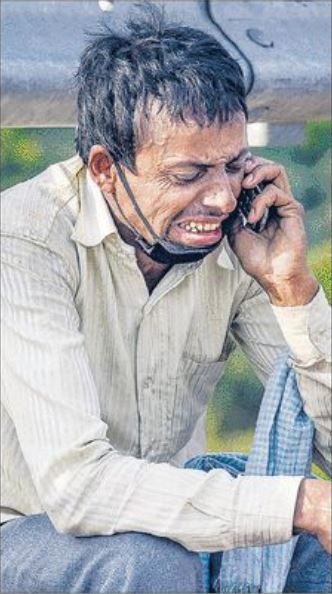On Tuesday, the picture of a migrant worker sitting on the roadside, tears streaming down his face, his pain and anguish evident as he spoke to someone on the phone went viral. Clicked by PTI photojournalist, Atul Yadav, the photograph became a symbol of how the country has failed its poor during the pandemic.
The worker, Rampukar Pandit, a resident of Bariyapur village in Begusarai district of Bihar had heard that his one-year-old son had died in the village due to an illness. Having heard the news he decided to walk to his village from Delhi’s Najafgarh, where he worked and had lost his job because of the lockdown, reported Hindustan, a Hindi daily.
As per the report, for three days he was stuck at the UP gate, as the police were not letting him cross the border. He had camped below the Ghazipur flyover in the hope that the police would take pity on him and let him through.
Relief came for Pandit on Wednesday, when, after reading the report, Delhi Police helped him get to the railway station evening. Rampukar boarded the 6:30 pm special train for Bihar.
Rampukar is among India’s nearly 40 million internal migrants whose livelihoods have been severely affected, the World Bank has noted in a report released in late April.
Low-wage migrant workers, especially those in non-essential sectors, are more vulnerable to the loss of jobs and wages.
Migrants like Rampukar face risks unique to their living and working situations.
According to the Census of India website, opportunities in urban areas like employment and education have been a pull factor attracting migrants from rural to urban areas and from smaller towns and cities to larger urban areas.
Employment loss has prompted a painful and chaotic process of mass return for internal migrants in India and many countries in Latin America, as migrants face the risk of contagion and the possible loss of wages, and health insurance coverage, the bank said.
The magnitude of internal migration is about two-and-a-half times that of international migration, it said, adding that governments need to address the challenges facing internal migrants by including them in health services and cash transfer and other social programmes, and protecting them from discrimination.

